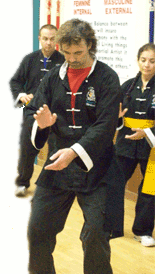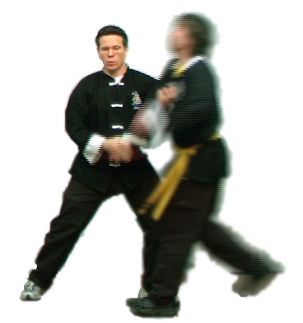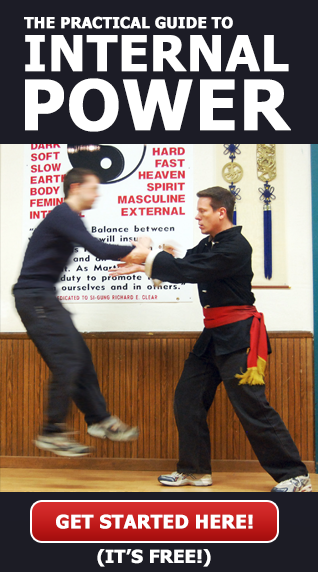 Tai Chi is becoming increasingly popular in the US and by now most people have heard of its amazing health benefits or of its effectiveness as a self defense method, but with many different organizations, styles, schools, and methods of Tai Chi and no uniform system of rank or qualification it can be difficult to know what to look for in a Tai Chi teacher.
Tai Chi is becoming increasingly popular in the US and by now most people have heard of its amazing health benefits or of its effectiveness as a self defense method, but with many different organizations, styles, schools, and methods of Tai Chi and no uniform system of rank or qualification it can be difficult to know what to look for in a Tai Chi teacher.
This article is designed to help students know what to look for and what kind of questions to ask a prospective Tai Chi instructor. It explains the bare minimum amount of knowledge that any beginning Tai Chi teacher, style, school or method of Tai Chi should know and be able to convey in order to teach Tai Chi. Most of what is detailed here is normally taught within the first year or two of Tai Chi training and can easily be learned within the first 3 years of training.
Obviously any beginning teacher will know at least a form or two of 24 Moves or more. Look for endorsements and talk to students who have gained real benefits from practicing Tai Chi with the instructor whose class you are considering. Do your homework. Visit several schools or facilities and try out some free classes.
Ask the Tai Chi instructors specific questions about their training.
If the instructor is both open with you and gives educated answers to your questions then realize that individual answers will vary and often will be situation dependent but there is an obvious difference between an educated opinion and someone who does not have a clue about the subject matter and specific terms that are related to the subject matter. Listen carefully and you should be able to get an idea of an instructor’s knowledge or lack thereof particularly if you are armed with some of the terms I am referring to in this article.
Many Western medical doctors, specialists and therapist have different opinions about causes and treatments of various medical conditions but the basics of anatomy and physiology and the medical terms for them are going to be pretty much the same from one human being to another. The same is true with Tai Chi. Even though approaches may be different, words like Chi, Jing, Peng, Sung, Tao, Yi, Shen and Li will be known by any real teacher. Anyone offering Tai Chi classes who does not have at least a working understanding of these terms simply does not have enough knowledge to properly teach Tai Chi.
The instructor should have at least a basic working knowledge and ability with most of the following,
- Basics of Chinese Medicine including Yin and Yang theory
- Chi Kung including an understanding of what Chi is and what it is not. -Chi is very explainable in Western medical and physics terms and the actual meaning and application of Chi Energy would make complete sense to any Western medical doctor, physicist, biologist, chemist, engineer etc etc.. Unfortunately, Chi is often explained in some sort of metaphysical mumbo jumbo way by teachers who either do not understand it or who feel they have something to gain by making and keeping it mysterious and elusive.
- Knowledge of sources of Chi
- An understanding of Chi Blockages and how to remove them using Tai Chi. This includes understanding the difference between Excess and Stagnant Chi and knowing how to restore proper balance and flow in the body using Tai Chi.
- The Meridians and pressure points as used in Acupuncture and how Tai Chi stimulates proper flow of Chi through them
- The 3 Treasures Chi, Jing & Shen/Yi
- The 3 Powers Heaven, Earth and Man
- Sung – A Chinese term that refers to Relaxation Techniques and Methods.
- Breathing methods including how to breathe to beneficially lower the heart rate and blood pressure in order to get the stress reduction and circulatory benefits that Tai Chi is famous for.
- Body Mechanics and body positioning that is truly based in knowledge of skeletal alignment and structure. This includes how to properly align the spine and how the midsection should be positioned and how the knees should be aligned to the feet and the foot placement for good knee health that utilizes the musculature of the leg and protects the tendons and ligaments.
- Natural body responses, actions and movement.
- Push Hands –This is a practice method of Tai Chi that is usually played as a physical game(s) but can also be utilized by students to simply learn better internal sensitivity to their own body and structure and internal skill of rooting and Sung relaxing.
- Internal Principles that begin with understanding how to drop excess tension in order to develop deep relaxation while moving and very powerful physical alignments that involve moving in ways that easily engage whole body power to whatever task you would desire to apply it to. These eventually go as far as one can imagine in the direction of being able to feel inside yourself and others to manipulate the internal organs, body structure and energy.
- Mind Intent including a real understanding of the difference between Yi and Shen
- Jing – Energetic Expressions for health and for self defense including:
- Peng, Lu, Ji, Ahn
- Jan Si Jing
- Rooting
- Fa Jing
- Pulling Silk
- Coiling
- Expanding and Contracting
- Condensing and Releasing
- Listening – Ting Jing
- Central Equilibrium – Dong Jing
- And many many others
- Wu Chi and How to help students actually feel the energy within the first several weeks of study. Our students are usually able to feel the electrical energy within the first 2-3 classes. This is critical to getting the famous Tai Chi results for arthritis as seen in studies.
- Tai Chi body frame training – Large, medium and small frame. This includes being able to perform the entire Tai Chi set in a very limited space of several feet as well as being able to utilize the great deal of space that is most commonly seen being utilized by Tai Chi practitioners.
- 4 ounces moves 1,000 pounds principles and concepts applied
- How to perform the Tai Chi moves in a weight bearing manner in order to get the bone density results as seen in studies performed at Emory University.
- How to utilize and practice Tai Chi in a manner that will rehabilitate injuries and physical conditions such as back problems. This is person and injury specific and is not just practicing the form moves the same way that everyone else in class does. Real Tai Chi for rehabilitation purposes is specific to the individual and any real Tai Chi instructor knows how to teach it this way. It also includes how to intelligently modify Tai Chi moves so that a person who is elderly or disabled can still get the full benefits of practice. This includes such things as being able to perform the Tai Chi while sitting down.
- Various and different ways to practice the Tai Chi moves in order to work with different personalities and mental states to develop different attributes and abilities including the ability to become more grounded and mentally focused and to how to mentally relax and get rid of body tensions including headaches depending on what is needed. Part of this refers to the idea that everyone should not be doing the same thing the same way. From a medical standpoint Tai Chi is very individualized. So, if the teacher claims they only practice or/and teach Tai Chi for health then they should be quite knowledgeable in this area and if they are not then not only do they not know the self defense aspects of Tai Chi but they don’t understand much about the health aspect of practicing Tai Chi either and you would do better to keep searching.
 Self Defense Applications – A Tai Chi teacher does not have to teach self defense to students who do not want it but any real teacher of Tai Chi who can impart the real knowledge of Tai Chi to others must have at least a basic understanding of how the movements are really applied and be able to demonstrate it. This is a necessity as the moves can only be truly understood if the practitioner knows the basic fundamental applications for the move. Without this knowledge the Tai Chi instruction really is a case of the blind leading the blind. Any basic Tai Chi instructor knows a minimum of 9 – 10 different applications for each and every move and the applications range from very simple to very sophisticated. An advanced teacher will often know a minimum of several dozen or more applications for each move that will include but is not limited to throwing, grappling, striking, seizing, controlling, pressure point strikes, take downs and slipping/warding off (soft blocking). Tai Chi began as a martial art and is still practiced as such by the Chinese and any real teacher of the art is going to have been exposed to this part of the discipline.
Self Defense Applications – A Tai Chi teacher does not have to teach self defense to students who do not want it but any real teacher of Tai Chi who can impart the real knowledge of Tai Chi to others must have at least a basic understanding of how the movements are really applied and be able to demonstrate it. This is a necessity as the moves can only be truly understood if the practitioner knows the basic fundamental applications for the move. Without this knowledge the Tai Chi instruction really is a case of the blind leading the blind. Any basic Tai Chi instructor knows a minimum of 9 – 10 different applications for each and every move and the applications range from very simple to very sophisticated. An advanced teacher will often know a minimum of several dozen or more applications for each move that will include but is not limited to throwing, grappling, striking, seizing, controlling, pressure point strikes, take downs and slipping/warding off (soft blocking). Tai Chi began as a martial art and is still practiced as such by the Chinese and any real teacher of the art is going to have been exposed to this part of the discipline.
This article only covers a small fraction of what the art of Tai Chi really has to offer.
Fortunately there are plenty of skilled and experienced Tai Chi teachers in America and there are even a few Tai Chi masters here in the US as well but you may have to do a little homework to find one of them.
The good news is that you don’t have to study from a Tai Chi master to get benefits. Any basically skilled teacher as described in this article will suffice. The bad news is that if you study from some one who does not have at least a basic understanding of Tai Chi skills, some of which are listed in this article, then you are learning something from someone who may do you more harm than good and at best is teaching nothing more than fancy choreography.
Good luck in your search and research. Please contact us and let us know if we can be of any help or guidance.
Sincerely,
Sigung/Sifu
Richard Clear

Sifu Clear:
Do you know of any qualified Tai Chi instructors in the Wichita Kansas area?
Anthony
Not that we know of at this time. However you can become one through our long distance training program.